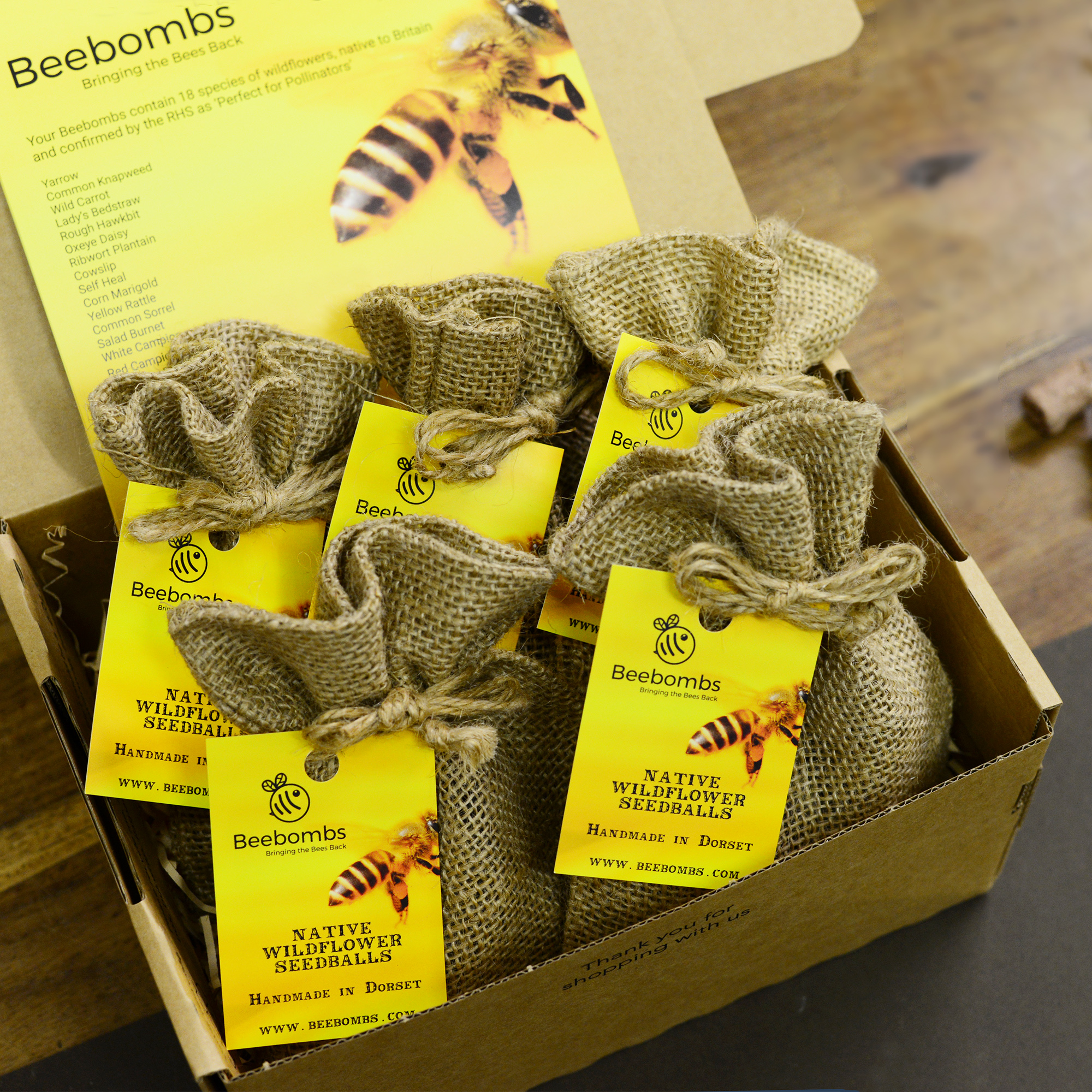Wool Carder Bee
Beebombs are dedicated to increasing wildflower habitat throughout the UK. 97% of which has been lost since WW2.
Intensive agriculture, urbanisation and increased use of ever more effective pesticides are causing declines in many of our native pollinators. Beebombs are set on improving this situation, 21 square foot at a time.
On this blog, we'll be looking at a range of pollinator species and today we are focusing on the fascinating European Wool Carder Bee
Common Name: Wool Carder Bee
Scientific Name: Anthidium manicatum
Information: Found mainly in the Southern England and Wales and rarely seen in Scotland, the Wool Carder Bee is a large solitary bee. It can be seen flying in June, July and August. It is a single generation per year species.
The females can be seen collecting pollen from a range of flower species and the males are fiercely territorial. They can often be seen battling invading insects, honeybees and other mail Wool Carder bees, using their barbed abdomen to attack challengers.
The species gets it's common name (carder - a practitioner of carding, a method of preparing wool for use as a textile), from it's nesting behaviour. Collecting tiny hairs from small leaves under it's belly to create a nest.
Concern Level: Low
Distribution: Throughout England and on coastal areas of Wales and Scotland.
Description: Unusually for British bees, the male is much larger than the female which makes it all the more effective when defending it's territory. Both of the sexes are marked with striking yellow patterns on the face and abdomen.





